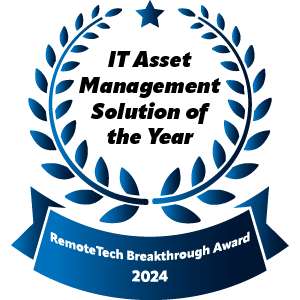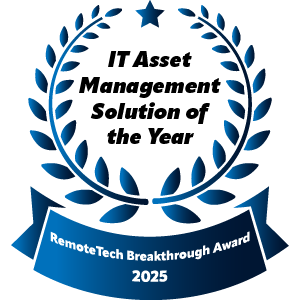How to Choose a Platform to Handle Your IT Assets’ Life Cycle
Managing the life cycle of IT assets is no small feat. From procurement to disposal, each stage presents unique challenges that require meticulous planning, seamless execution, and constant oversight. The right IT asset management solutions can make all the difference, helping businesses track, manage, and optimize their IT assets while ensuring compliance and sustainability.
Choosing the right platform, however, can take time and effort. With numerous IT asset management companies offering various types of asset management software, knowing where to start is key.
Let’s look into what to consider when evaluating platforms to manage your IT assets effectively.
What is IT Asset Management and Why Does It Matter?
IT asset management (ITAM) is more than just tracking hardware or software. It’s a strategic approach to managing an organization’s technology investments, ensuring they are used efficiently, maintained properly, and replaced at the right time.
A dynamic platform simplifies this process by offering visibility, control, and insights across the asset life cycle – from acquisition and deployment to maintenance and disposal.
Key Considerations When Choosing a Platform
Here are the factors we recommend focusing on when evaluating IT asset management software features:
Scalability and Flexibility
As your business evolves, so will your IT needs. Choose a platform that can scale with your organization, whether it’s adding new devices, integrating with other systems, or managing remote workforce tools. Flexible IT asset management solutions adapt to changing workflows, ensuring the software remains relevant over time.
Comprehensive Asset Tracking
Effective network asset management software provides complete visibility of your assets, including hardware, software licenses, cloud subscriptions, and IoT devices.
Look for features such as:
- Real-time asset tracking.
- Barcode or RFID scanning capabilities.
- Integration with existing systems like ERP or CRM tools.
Tracking assets across their entire lifecycle reduces the risk of underutilization, theft, or unnecessary expenses.
Automation Capabilities
Manual processes can bog down IT teams. Automation can help streamline repetitive tasks like inventory updates, license renewals, and compliance checks. Platforms that offer automated alerts for maintenance schedules or expiring warranties can save time and improve operational efficiency.
Compliance and Security
Considering the rate of increasing regulatory requirements, compliance should be non-negotiable.
The platform should:
- Track software license usage to avoid audits.
- Ensure data protection standards are met.
- Provide comprehensive reporting to demonstrate regulatory adherence.
Cybersecurity is equally important. Features such as encryption, multi-factor authentication, and secure access controls help protect sensitive company data.
User-Friendly Interface
A platform packed with features is only valuable if it’s easy to use. Intuitive dashboards, customizable reports, and straightforward navigation make adoption smoother for your team. A trial or demo can help you assess the software’s usability before committing.
Integration with Existing Tools
No IT asset management platform works in isolation. Ensure the software integrates seamlessly with your existing infrastructure, such as:
- IT service management tools (ITSM)
- Financial systems
- Cloud management solutions
Integration minimizes disruptions and eliminates the need for duplicate data entry.
Sustainability Features
As environmental concerns grow, businesses are focusing on sustainability. Platforms that track energy usage, carbon footprints, or eco-friendly disposal methods can help your organization align with green initiatives.
Benefits of a Robust IT Asset Management Platform
Investing in the right IT asset management platform offers tangible advantages for businesses, helping streamline operations and improve decision-making across the board.
Here are some of the key benefits:
Improved Asset Utilization
A reliable platform provides accurate, real-time insights into asset usage, allowing you to identify underused or overburdened resources. By reallocating or optimizing these assets, you extend their lifespan and maximize return on investment (ROI). This ensures that all technology investments deliver their intended value, reducing waste and improving efficiency across your IT environment.
Cost Savings
An additional benefit is the reduction of costs through comprehensive lifecycle tracking of hardware and software, helping prevent unnecessary purchases, such as duplicate devices or licenses.
Automation tools play a key role in ensuring timely maintenance and renewals, reducing the risk of penalties for expired warranties or non-compliance. These cost-saving features safeguard your budget while also enabling more accurate and reliable financial forecasting.
Enhanced Productivity
Manual tracking and reporting processes consume valuable time for IT teams. Automation features reduce this burden by handling tasks like inventory updates, software audits, and compliance checks. With fewer administrative responsibilities, your IT staff can focus on strategic initiatives that drive innovation and growth, enhancing overall productivity.
Regulatory Compliance
Meeting regulatory requirements is vital to avoiding fines or reputational risks. A robust platform tracks compliance metrics, monitors software license usage, and generates detailed reports for audits. These tools ensure adherence to data protection laws and industry standards, giving you peace of mind and reducing legal exposure.
Improved Decision-Making
With access to detailed analytics and reporting, your organization can make informed decisions regarding asset allocation, lifecycle planning, and IT budgeting. This enables a proactive approach to managing resources, ensuring that future investments align with business goals.
Comparing Asset Management Software: What to Look For
When evaluating IT asset management platforms, it’s essential to create a checklist of the features that matter most to your organization.
Here are some key factors to consider for your asset management software comparison:
- Scalability: Choose software that can grow with your organization. A scalable platform ensures it can handle increasing asset volumes and adapt to evolving IT needs.
- Automation: Automation features can streamline repetitive tasks and save time, but their importance depends on your organization’s workload and processes. Look for platforms that offer automated alerts and workflows to reduce manual intervention.
- Integration: Compatibility with your existing tools is critical. Ensure the platform integrates seamlessly with IT service management tools, financial systems, and cloud management solutions to avoid disruptions and duplicate data entry.
- Security: Protecting sensitive company data should be a top priority. Select a platform with robust security measures, such as encryption, multi-factor authentication, and secure access controls.
- User Interface: A user-friendly interface improves adoption and makes it easier for your team to navigate the system. Look for intuitive dashboards and customizable features that cater to your specific needs.
Additionally, assess the level of customer support the software vendors on your shortlist provide. Reliable support can ensure smoother implementation, quick issue resolution, and long-term satisfaction with your chosen platform.
Questions to Ask Providers
Before making your final decision, ask potential providers the following critical questions. Your answers to these questions will clarify whether a provider’s platform aligns with your needs:
- How do you ensure data security within your platform?
- Can your platform handle remote and hybrid workforces?
- What level of customization is available?
- Are training resources provided for new users?
- What is your approach to managing software license compliance?
Simplify IT Asset Recycling with ReturnCenter
Choosing the right IT asset management software is a critical decision that helps businesses streamline operations, maintain compliance, and optimize technology investments.
However, as part of managing IT assets effectively, organizations should also consider how to handle outdated or unused electronics responsibly. This ensures that technology lifecycles are efficient and sustainable, reducing environmental impact and supporting broader corporate social responsibility goals.
At ReturnCenter, we make it easy to address this often-overlooked aspect of IT asset management. Our platform empowers you to recycle old electronics responsibly while supporting causes you care about.
Start your journey toward comprehensive IT asset management and sustainable recycling today. Create an account with us to access convenient solutions for recycling, repurposing, or donating your old devices.


